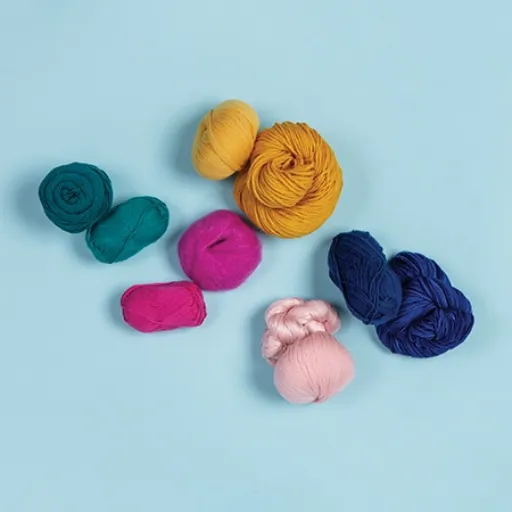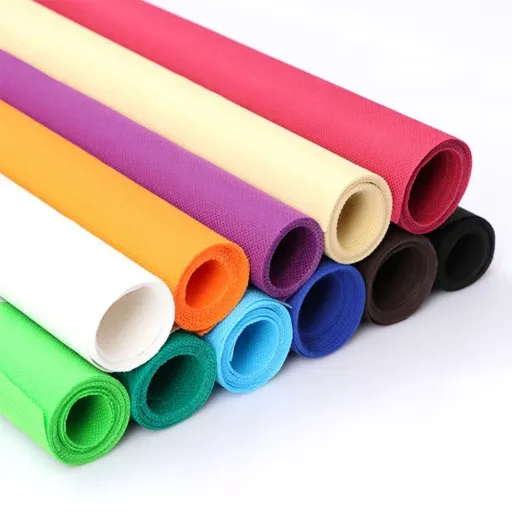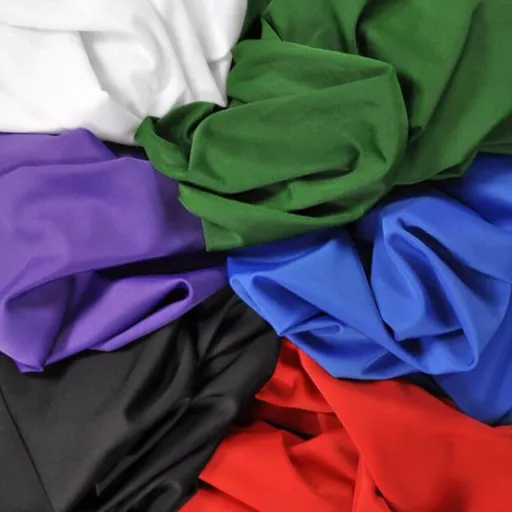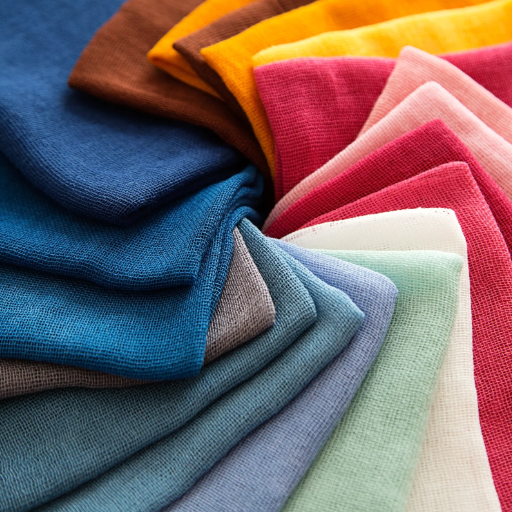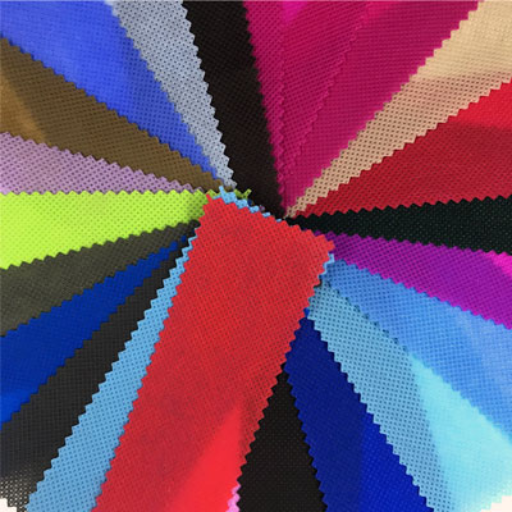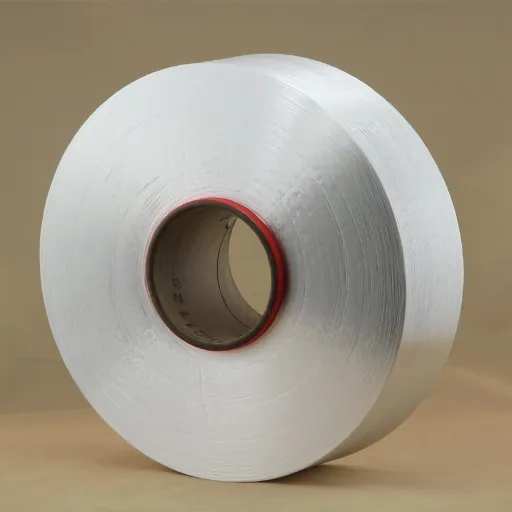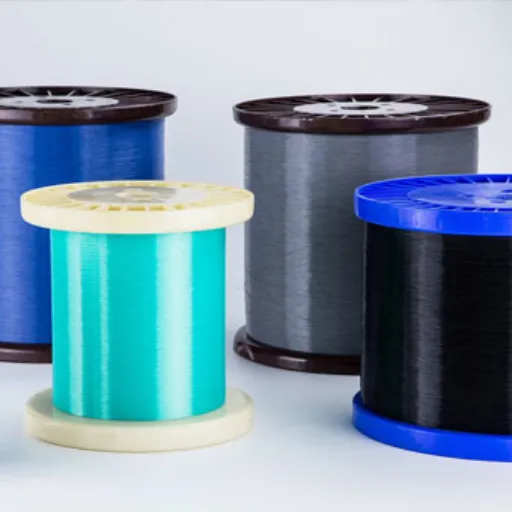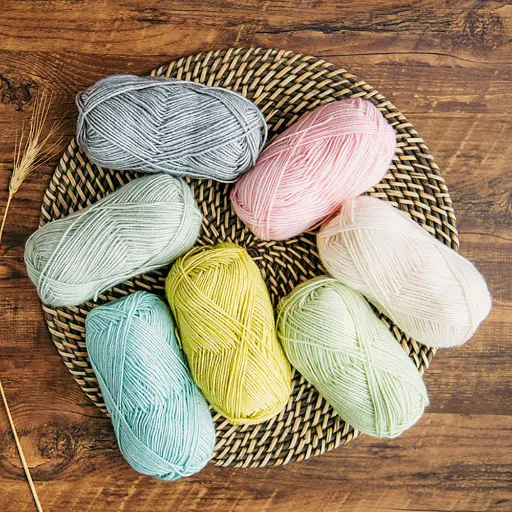Being among the most adaptable and functional fabrics in the world, many often have doubts regarding the properties of polyester. Is polyester thick? When purchasing clothes, household textiles, or specialty fabrics, it is essential to understand the properties of polyester. This article further examines the thickness and strength of the fabric, as well as its widespread application across various industries. From the benefits of the fabric to how one can use it, you will learn all there is to know about this very popular fabric. Stay tuned as we present the facts and break down polyester for you!
Introduction to Polyester

Polyester, a synthetic fabric made from petroleum-based products, offers exceptional durability and flexibility, making it suitable for manufacturing clothing, household goods, and specific industrial applications. Polyester, being resistant to wrinkling, shrinking, and stretching, invites less maintenance and is highly practical in everyday use. It dries quickly and can be combined with other fibers to enhance its properties. These qualities made polyester the most popular and versatile material of its time.
What is Polyester?
Polyester is the synthetic fiber obtained chiefly from petroleum-based products by a chemical process called polymerization, where ethylene glycol is polymerized with terephthalic acid. The fabric was initially introduced to the market in the early 1940s and has become the most widely produced and used fabric globally today. A relatively light fiber with a good strength-to-weight ratio, polyester is used in industries ranging from fashion to home textiles to high-performance sportswear. Through new processes, it has also been possible to produce recycled polyester from plastic waste, giving the fiber a more sustainable angle and mitigating its environmental impact.
Why Discuss Thickness?
Thickness greatly influences the practical utility, durability, and comfort of polyester fabrics. For example, thicker polyester materials are more suitable for applications in buildings that require greater durability, such as upholstery and outerwear. On the other hand, lighter, thinner polyesters are better suited for use in lightweight apparel or breathable fabrics, with such thin fabrics being mostly preferred for their stretchability and moisture-wicking properties in high-performance sportswear. This view is backed by the latest data from search engines, where consumer interest has soared in the study of fabric thickness, signaling the other’s importance in the trade purchasing decision. Much emphasis on thickness also signals how it aids the tailoring of polyester to meet specific needs, ensuring maximum performance and user satisfaction.
Understanding Fabric Thickness
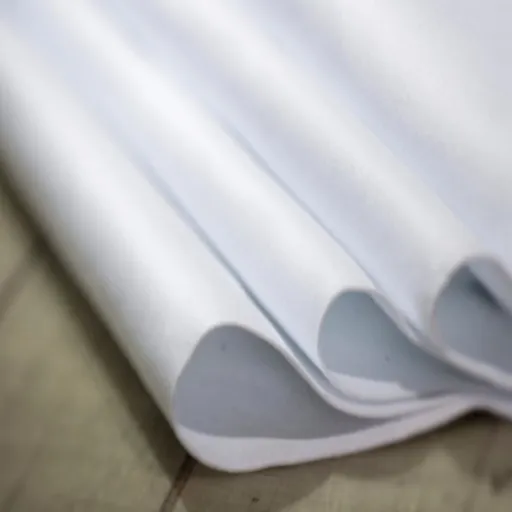
Fabric thickness refers to the density and weight of a material, which are key aspects that influence wearability, comfort, and usability. Thick fabrics typically offer greater insulation and strength; therefore, they are often considered for cold weather or heavy-duty applications. Thin materials are, however, lighter and breathable-i.e., suitable for warm environments or vigorous exertion. Measuring the thickness of fabric thus enables the end user to make an informed choice according to their requirements and the external environment, for the best possible output and comfort.
How is Fabric Thickness Measured?
The laser measurement employs a micrometer or other thickness-measuring instruments, as well as instruments for detecting different forms of inhomogeneities. The measuring device applies a small weight to the material being measured. The unit of measure is generally expressed in millimeters or inches for numerical values in measurement. Other parameters considered include manufacturing processes, weave patterns, and densities. Digital thickness measurement systems have been introduced recently to enhance accuracy and, consequently, efficiency. With these techniques available for determining fabric thickness, manufacturers in all industries can make more informed decisions regarding their materials.
Why Does Thickness Matter?
When it comes to functionality, wear and tear, and overall performance, fabric thickness is a crucial factor. Thicker fabrics are simultaneously accepted for providing better insulation and may offer better protection against heavy-duty applications, making them apt for a chilly environment. On the other hand, thinner fabrics promote breathability and lightweight comfort, both of which are heavily sought after in warm climates and activewear. In fact, recent trends in search data have led customers to increasingly consider fabric thickness when evaluating a product, especially for outdoor gear, bedding, and workwear. Achieving the proper thickness ensures that the material is suitable for its intended purpose, which in turn affects comfort, resistance to wear, and its overall performance in a specific environment.
Is Polyester Thick?

The diameter of the polyester fiber is generally considered intermediate, varying slightly with the manufacturing conditions and the definite uses it is intended for. Most lightweight polyesters are designed for activewear, while the heavier ones are used in outerwear and upholstery. Hence, it is a highly versatile fiber whose thickness varies according to the weave and purpose of the fabric.
Analyzing Polyester’s Thickness
Key Insight:
The thickness of a polyester depends on several factors, including fiber density, weave, and its intended purpose. According to recent analytical data, polyester fabrics range from 60 to 120 GSM in their lightweight category, which is primarily used in sportswear and activewear. Heavier polyesters, exceeding 200 GSM, are used for outerwear and upholstery, thereby promoting their strength and insulation. This range demonstrates that polyester can respond to various needs, whether for breathable summer wear or sturdy furnishings.
Expert Insights and Data
According to the search engine’s latest statistics, it is evident that polyester remains one of the most widely searched and used synthetic fibers worldwide. An oft-asked question remains- “What underpins broad industrial usages of polyester?” It is essentially characterized by versatility, price, and durability. Being an excellent wrinkle-, shrink-, and stretch-resistant fiber, polyester is a favorite among textile designers, fashion designers, and interior designers alike. Furthermore, the low production cost and its ability to adapt to modern production technologies have contributed to its popularity, as evident in search trends for sustainable and recycled options of polyester.
Comparing Polyester to Other Fabrics
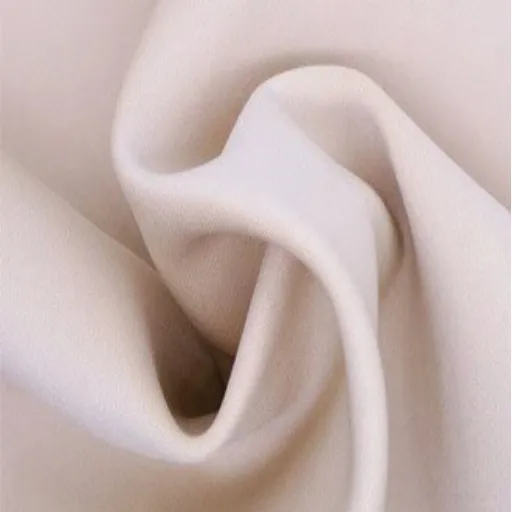
Polyester is one of those fabrics that offers key advantages when compared with other fabrics in terms of wear resistance, cost, and climate. Polyesters, unlike natural fabrics like cotton or wool, are wrinkle-resistant and do not shrink; this makes their care relatively easy and is perfectly suitable for everyday use. Polyester dries faster and is also more stain-resistant, offering another practical advantage. However, natural fabrics do provide superior breathability and comfort, which the wearer may prefer in hotter climate conditions or for sensitive skin. Recycled polyester is emerging as an environmentally friendly choice, aiming to strike a balance between practicality and environmental responsibility.
Polyester vs. Cotton
| Key Point | Polyester | Cotton |
|---|---|---|
| Material Type | Synthetic fiber | Natural fiber |
| Breathability | Low | High |
| Moisture Absorption | Repels water | Absorbs moisture |
| Durability | Highly durable | Less durable |
| Softness | Less soft | Very soft |
| Cost | More affordable | Slightly more expensive |
| Drying Time | Dries quickly | Takes longer to dry |
| Eco-Friendliness | Less sustainable | Sustainable |
| Wrinkle Resistance | Wrinkle-resistant | Wrinkles easily |
| Best Use Cases | Sportswear, outdoor gear | Everyday wear, bedding |
Polyester vs. Wool
| Key Point | Polyester | Wool |
|---|---|---|
| Material Type | Synthetic fiber | Natural fiber |
| Breathability | Low | High |
| Moisture Management | Repels water | Absorbs moisture |
| Temperature Regulation | Poor | Excellent |
| Durability | Highly durable | Less durable |
| Softness | Less soft | Very soft |
| Care Requirements | Easy to maintain | Requires special care |
| Eco-Friendliness | Less sustainable | Sustainable |
| Best Use Cases | Sportswear, outdoor gear | Winter clothing, luxury items |
| Cost | More affordable | More expensive |
Practical Applications
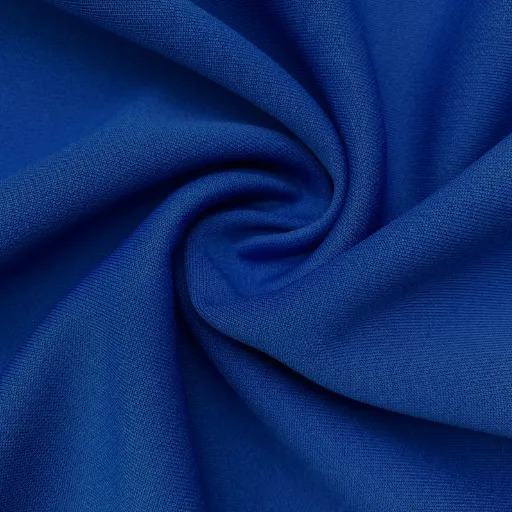
With clothing choices, the decision mainly depends on the ultimate use and what the holder values most. Each material has its own advantages and disadvantages. For instance, synthetic fabrics are best suited for activewear since they are durable and moisture-repellent, while also offering good breathability. They are therefore popularly used for sports and outdoor activities. In contrast, natural fibers like wool or cotton are softer, absorb moisture, and regulate temperatures well; thereby, their best uses have been considered for winter wear or higher-priced fashion. Balancing all these factors with sustainability aspects, cost, and maintenance may enable an end user to make an informed decision suitable to their needs.
Clothing
Activewear, outerwear, and daywear are all made from polyester due to its durability, moisture-wicking, and wrinkle-resistant properties.
Home Textiles
Curtains, upholstery, rugs, and bedding are all made from polyester due to its strength, stain resistance, and ease of maintenance.
Industrial Uses
Its properties of high tensile strength and abrasion resistance make it ideal for making ropes, tarpaulins, conveyor belts, and filtration materials.
Packaging
Used in PET bottles and food containers due to its lightweight and recyclable properties.
Crafting and DIY Projects
Tote bags, costumes, and quilting materials often utilize polyester due to its versatility and affordability.
Pure polyester, in its nature, is never thick; it will be woven or engineered in different thicknesses as per its intended use. From my experience, you will find lightweight fabrics, such as polyester chiffon, and thicker ones, like upholstery or industrial home decor textiles, making them as versatile as they come.
Industrial Applications Focus
Polyester has become an indispensable material across various industries because of its endurance, flexibility, and affordability. Typical industrial applications include conveyor belts, coated fabrics, and safety belts, where strength and wear resistance are paramount. Furthermore, polyester is widely used in high-performance ropes, tire reinforcements, and filtration systems. The ability to resist stretching, shrinking, and moisture provided by this material has led to the polyester industry becoming a reliable and efficient choice in these applications. Combining these characteristics with improvements in production techniques continues to broaden the industrial scope of polyester on a global scale.
Reference Sources
These are five scholarly, authoritative reference sources for verifying the correctness of your article on “Is Polyester Thick”:
- ScienceDirect – Polyester Material Overview
This source describes the weight of polyester and the processes through which it is manufactured into lightweight or thick fabrics. - ScienceDirect – Polyester Fiber
Explores the thickness of polyester fiber and its uses. - Taylor & Francis Online
Examines the production and nature of polyester in various contexts. - ResearchGate
Studies the physical properties, including thickness, of polyester blends. - AIP Publishing
Studies how the thickness of polyester fabric affects skin temperature and comfort.
Frequently Asked Questions (FAQs)
What is polyester made of?
Polyester is made from a polymer known as polyethylene terephthalate (PET), which is derived from petrochemical products. This synthetic material is created through a chemical reaction involving ethylene glycol and terephthalic acid.
Is polyester thick or thin?
The thickness of polyester can vary depending on its type and the production process. Generally, polyester can be produced in both thick and thin forms, making it versatile for a wide range of applications, from lightweight garments to thicker bed sheets.
What are the advantages and disadvantages of polyester fabric?
Polyester fabric offers numerous advantages, including durability, resistance to wrinkles, and ease of care. However, it also has disadvantages, such as the potential to irritate individuals with sensitive skin and its environmental impact resulting from production processes.
How is polyester produced?
The production of polyester involves synthesizing the polymer from petrochemicals, followed by processes that turn it into either staple fiber or filament. This enables the creation of various types of polyester fabrics, suitable for a wide range of applications.
Can polyester be dyed?
Yes, polyester can be dyed using disperse dyes, which are specifically designed for synthetic fibers. However, dyeing polyester requires high temperatures and specific techniques to ensure the color adheres properly to the fabric.
What is the difference between polyester and natural fibers like cotton?
The main difference lies in their composition; polyester is a synthetic fiber, while cotton is a natural fiber. Polyester tends to be more durable and resistant to wear and tear, whereas cotton is generally more breathable and comfortable against the skin.
Is washing polyester easy?
Yes, washing polyester is easy as it is machine washable and dries quickly. However, it is essential to follow care instructions to maintain its dimensional stability and prevent damage, such as washing at a high temperature.
What are the common uses of polyester?
Polyester is often used in the production of various garments, home textiles like bed sheets, and even in industrial applications. Its versatility and durability make it a popular choice across many industries.
How does polyester impact the environment?
The environmental impact of polyester production is a concern, particularly due to its reliance on fossil fuels and the release of microplastics during the washing process. However, efforts are being made to use post-consumer plastic in the production of new polyester, thereby reducing the overall impact.








